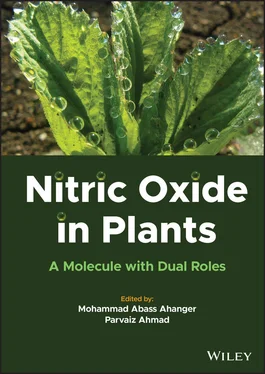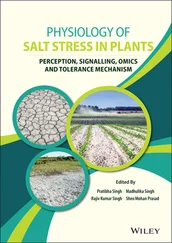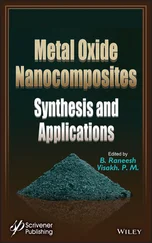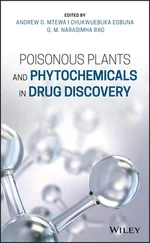Nitric Oxide in Plants
Здесь есть возможность читать онлайн «Nitric Oxide in Plants» — ознакомительный отрывок электронной книги совершенно бесплатно, а после прочтения отрывка купить полную версию. В некоторых случаях можно слушать аудио, скачать через торрент в формате fb2 и присутствует краткое содержание. Жанр: unrecognised, на английском языке. Описание произведения, (предисловие) а так же отзывы посетителей доступны на портале библиотеки ЛибКат.
- Название:Nitric Oxide in Plants
- Автор:
- Жанр:
- Год:неизвестен
- ISBN:нет данных
- Рейтинг книги:5 / 5. Голосов: 1
-
Избранное:Добавить в избранное
- Отзывы:
-
Ваша оценка:
- 100
- 1
- 2
- 3
- 4
- 5
Nitric Oxide in Plants: краткое содержание, описание и аннотация
Предлагаем к чтению аннотацию, описание, краткое содержание или предисловие (зависит от того, что написал сам автор книги «Nitric Oxide in Plants»). Если вы не нашли необходимую информацию о книге — напишите в комментариях, мы постараемся отыскать её.
Examines the beneficial roles of nitric oxide in growth and stress tolerance regulation through its involvement in tolerance mechanisms Nitric Oxide in Plants: A Molecule with Dual Roles
Nitric Oxide in Plants: A Molecule with Dual Roles
Nitric Oxide in Plants — читать онлайн ознакомительный отрывок
Ниже представлен текст книги, разбитый по страницам. Система сохранения места последней прочитанной страницы, позволяет с удобством читать онлайн бесплатно книгу «Nitric Oxide in Plants», без необходимости каждый раз заново искать на чём Вы остановились. Поставьте закладку, и сможете в любой момент перейти на страницу, на которой закончили чтение.
Интервал:
Закладка:
Chapter 1provides an overview of the biosynthesis and regulation of NO synthesis in plants vis-à-vis its regulatory role in plant growth regulation. In addition the interaction of NO with certain key stress molecules is also discussed. Chapter 2examines the enzymatic and nonenzymatic biosynthesis of NO, and the influence of different stress factors on NO synthesis. Moreover, modulations in NO synthesis due to osmolytes are considered, and a brief discussion about signaling components including transcription factors and phytohormones is also included. Chapter 3discusses the reductive and oxidative pathways of NO synthesis, and the physiological, biochemical, and molecular modulations resulting from interactions of NO with auxin, gibberellic acid, cytokinin, ethylene, and abscisic acid. NO-mediated regulation of growth, photosynthesis, and tolerance mechanisms under different environmental stresses are also discussed. Chapter 4reviews the molecular interventions for enhancing NO synthesis for its optimum exploitation for plant growth enhancement. NO-mediated regulation of phytohormones and fatty acids vis-à-vis signaling mechanisms is also the subject of this chapter. In addition, gene expression modulation and stress tolerance are examined. The role of nitrogen in production of NO and the subsequent regulation of major plant cellular pathways are described in Chapter 5. The role of beneficial microbes in NO production under normal and changing environmental conditions are dealt in Chapter 6, with a focus on physiological-, biochemical-, and molecular-level tolerance mechanisms. In addition, the interactive effects of ROS and NO in tolerance to biotic and abiotic stresses are mentioned. There is also a focus on the contribution of nitrifying and denitrifying bacteria in NO production and subsequent alterations in gene expression, as well as the role of polyamines. Chapter 7discusses the synthesis, metabolism, and transport of ROS and reactive nitrogen species (RNS). The role of reactive oxygen, sulfur, and nitrogen species in stress signaling and the underlying cross-talk for tolerance against abiotic and biotic stresses are explained. Chapter 8deals with understanding the role of endogenous and exogenous NO in modifying the key antioxidant pathway – the ascorbate–glutathione cycle. The role of NO-induced changes in enzymatic and nonenzymatic components of the ascorbate–glutathione cycle in plant growth regulation is examined. The authors also explain the posttranslational modifications of NO and their role in signaling and stress tolerance. In Chapter 9the authors take the opportunity to explain the cross-talk mechanisms underlying environmental stress tolerance mediated by NO and phytohormones like auxins, cytokinins, gibberellins, abscisic acid, ethylene, jasmonic acid, salicylic acid, and brassinosteroids. The regulation (positive and negative) of several signaling pathways and the elicitation of tolerance mechanisms for improved plant performance are also discussed. Phytohormone–NO cross-talk for improved nutrient acquisition and photosynthetic regulation is the topic of Chapter 10. In addition the authors also examine the antagonistic and synergistic influence of NO on phytohormone synthesis, photosynthate partitioning, gene expression, and programmed cell death regulation. Chapter 11covers the role of polyamines in NO synthesis and their interactive effects in alleviating the damaging effects of stresses. Polyamine metabolism-induced ROS production and subsequent triggering of NO accumulation are also discussed. In Chapter 12the authors consider the NO-mediated modulation of the synthesis and transport of auxins, abscisic acid, and brassinosteroids under normal and adverse environmental conditions. In addition the molecular mechanisms of the signaling events resulting from their interactions are discussed. Finally, Chapter 13looks at the interactive effects of NO and salicylic acid, jasmonic acid, and ethylene, with a focus on the antioxidant functioning of plants with regard to stress tolerance. Posttranslational modifications by NO and its cross-talk with salicylic acid, jasmonic acid, and ethylene for regulation of several downstream targets are discussed.
This volume presents a wealth of knowledge on the current understandings of NO and growth regulation in plants, and provides insights into the abiotic and biotic stress tolerance mechanisms regulated by NO. The chapters included in this volume are the authors’ own work and necessary editorial modifications were incorporated wherever the need was felt. We have tried our best to gather the most up-to-date information about NO research; however, some areas are inevitably missing and there is always the possibility of errors creeping into the book. Therefore, we seek the readers’ indulgence, and suggestions are welcome for improvements in future editions. We are very thankful to the well-versed contributors who accepted our invitation and contributed chapters despite the hardships created by the pandemic. Moreover, we extend our sincere thanks to the entire team at Wiley, especially Kerry Powell, Rebecca Ralf, and Camille Bramall, for their invaluable suggestions and constant help in accomplishing this project and its publication.
Dr. Mohammad Abass Ahanger
Dr. Parvaiz Ahmad
List of Contributors
Altaf AhmadDepartment of Botany Aligarh Muslim University Aligarh Uttar Pradesh India
Muhammad AshrafThe University of Agriculture Faisalabad Pakistan
Mehtab Muhammad AslamCenter for Plant Water Use and Nutrition Regulation College of Life Sciences Joint International Research Laboratory of Water and Nutrient in Crops Fujian Agriculture and Forestry University Fuzhou Fujian China
Habib-ur-Rehman AtharInstitute of Pure and Applied Biology Bhauddin Zakria University Multan Pakistan
Ester BadianiDipartimento per la Innovazione nei Sistemi Biologici Agroalimentari e Forestali Università della Tuscia Viterbo Italy
Maurizio BadianiDipartimento di Agraria Università Mediterraneadi Reggio Calabria Loc. Feo di Vito Reggio Calabria Italy
Sagar BagLaboratory of Microbial Interaction School of Biotechnology Presidency University Kolkata West Bengal India
Avishek BanikLaboratory of Microbial Interaction School of Biotechnology Presidency University Kolkata West Bengal India
Renu BhardwajPlant Stress Physiology Lab Department of Botanical and Environment Sciences Guru Nanak Dev University Amritsar Punjab India
Priti ChauhanDepartment of Bioscience and Biotechnology Banasthali Vidyapith Rajasthan India
Mario CiaffiDipartimento per la Innovazione nei Sistemi Biologici Agroalimentari e Forestali Università della Tuscia Viterbo Italy
Loitongbam Lorinda DeviNational Institute of Plant Genome Research Aruna Asaf Ali Marg New Delhi India
Debjani DuttaDepartment of Plant Physiology Faculty of Agriculture Bidhan Chandra KrishiViswavidyalaya Mohanpur Nadia West Bengal India
Padmanabh DwivediDepartment of Plant Physiology Institute of Agricultural Sciences Banaras Hindu University Varanasi Uttar Pradesh India
Kaneez FatimaDepartment of Life Sciences University of Management and Technology (UMT) Johar Town Lahore Pakistan
Abah FelixCrop Protection College Fujian Agriculture and Forestry University Fuzhou Fujian China
Arajmand FrukhDepartment of Botany School of Chemical and Life Sciences Jamia Hamdard New Delhi India
Shreya GuptaNational Institute of Plant Genome Research Aruna Asaf Ali Marg New Delhi India
Asma ImranNational Institute for Biotechnology and Genetic Engineering – Campus Pakistan Institute of Engineering and Applied Sciences (NIBGE-C-PIEAS) Faisalabad Pakistan
Читать дальшеИнтервал:
Закладка:
Похожие книги на «Nitric Oxide in Plants»
Представляем Вашему вниманию похожие книги на «Nitric Oxide in Plants» списком для выбора. Мы отобрали схожую по названию и смыслу литературу в надежде предоставить читателям больше вариантов отыскать новые, интересные, ещё непрочитанные произведения.
Обсуждение, отзывы о книге «Nitric Oxide in Plants» и просто собственные мнения читателей. Оставьте ваши комментарии, напишите, что Вы думаете о произведении, его смысле или главных героях. Укажите что конкретно понравилось, а что нет, и почему Вы так считаете.












